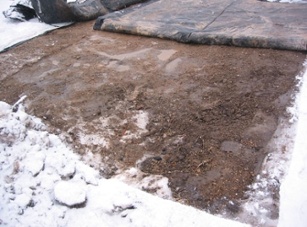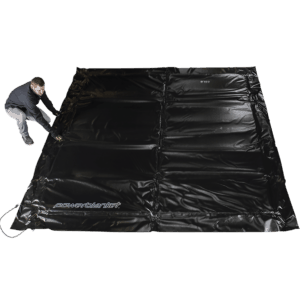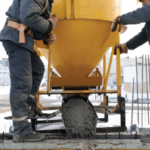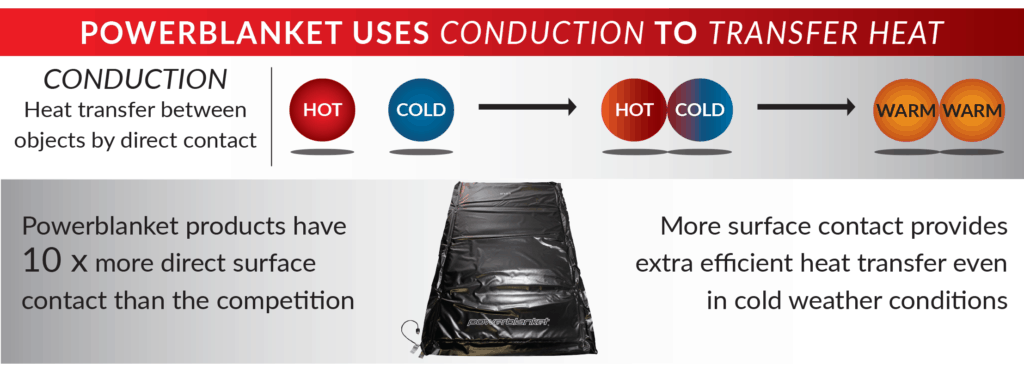Electric concrete blankets versus insulated blankets. Which one is best and why is it Powerblanket?
Not All Concrete Insulated Blankets Are Created Equal
If you happen to read almost any do-it-yourself guide, you will likely see a sentence that says, “If temperatures are below 40°F, use insulated blankets or straw to keep your freshly-poured concrete from freezing.” Well, that sounds nice and easy, but simply keeping concrete from freezing isn’t enough.
Why Heat Concrete?
The optimum range for proper concrete curing is between 65° – 85° F. When concrete dips below that range, ice crystals can form, cure strength will be compromised, and several temperature based defects can occur. Concrete pouring is a critical stage in any construction project and problems derail progress when it needs to be repaired or re-poured. Solely insulating concrete during curing seems appealing and money-saving, but can lead to costly time delays and expensive re-works.
What is Thermal Insulation?
Simply put, thermal insulation reduces the transfer of heat between objects. There are a myriad of both natural and synthetic materials used to insulate objects in different industries. When thermal insulation is placed on something that is already warm, it will prevent heat from escaping.
The chemical reaction of concrete formation is exothermic and does create some heat. This heat can be trapped (to some degree) with the use of insulating blankets or straw. But if it’s cold enough outside, insulating blankets won’t keep the temperature at an ideal level for maximum curing.
Insulation + Heating
When pouring concrete in cold weather, providing thermal insulation is only half the battle. Most insulated blankets will not provide enough surface contact to effectively insulate your concrete on really cold days. Combining the protective power of insulation plus even heat distribution gives you an advantage over mother nature.
Electric concrete heating blankets provide the protective layer of insulation and an extra boost of heating power to keep your concrete between 65° and 85° F. Concrete blankets have 10x more surface contact than other blankets. They efficiently transfer heat down into your concrete while heavy-duty weather-proof insulation protects it from the elements and heat-loss.
Thaw Before Your Pour
No insulating blanket on its own will thaw frozen ground, and pouring concrete on frozen ground can have serious repercussions.

Electric ground thawing blankets are the best way to ensure your concrete pour gets off on the right foot. Using an electric ground thawing blanket prepares the ground before you pour so ambient temperatures above and below your concrete are at ideal levels.
Concrete Curing Blankets Many factors have an effect on concrete cure time, such as the type of mix used, the size and shape of the slab, and the ambient weather. Of all these factors, weather and temperature is the most unpredictable. The colder the temperature, the longer concrete will take to set and reach its proper strength. During cold weather, a conventional insulated blanket will cause the concrete to take longer to cure and will result in a weaker concrete.
Many factors have an effect on concrete cure time, such as the type of mix used, the size and shape of the slab, and the ambient weather. Of all these factors, weather and temperature is the most unpredictable. The colder the temperature, the longer concrete will take to set and reach its proper strength. During cold weather, a conventional insulated blanket will cause the concrete to take longer to cure and will result in a weaker concrete.
For example, concrete kept at 70°F will set in approximately 6 hours, whereas concrete kept at 40°F will take 14 hours to set. Concrete maintained at 70° F will reach a compression strength of 2,700 psi in 3 days; concrete maintained at 40° F will only reach a strength of 1,200 psi in 3 days.
This disparity in strengths makes a huge difference in whether your construction project can proceed. If concrete takes too long to set, cure, and strengthen, your project can be significantly delayed. Some concrete manufacturers find it too problematic to operate during the winter, creating a costly off season.
Concrete Solutions From Powerblanket
With Powerblanket, there is no off season. The difference between conventional insulating concrete blankets and electric concrete curing blankets is clear, and our electric blankets are a cut above the rest. By combining heavy weatherproof insulation with electric heating components, Powerblanket can cure concrete 2.8 x faster than conventional insulated blankets.
Our ground thawing blankets melt ice and snow and prepare the ground before your concrete is even poured. Our concrete curing blankets then maintain the temperatures you need to more quickly cure your slab to a strong finish. Powerblanket can eliminate costly weather delays, ensure your project proceeds on schedule and that your concrete will be long-lasting and durable. Contact us to find the right concrete solution for your needs 855.440.0208 or [email protected].
Frequently Asked Questions
Do insulation blankets work?
Yes, insulation blankets effectively provide temperature control and safety benefits, enhancing energy efficiency in industrial construction projects by maintaining optimal curing temperatures for concrete.
Are over electric blankets safe?
Yes, electric blankets designed for concrete curing are safe when used correctly, as they are engineered to maintain specific temperatures without posing health risks.
How do you keep electric blankets safe?
To ensure safety, always follow the manufacturer's instructions, avoid using them with incompatible materials, and ensure they are properly secured and monitored during use.
Cure your concrete faster and better in cold weather conditions with Powerblanket.








